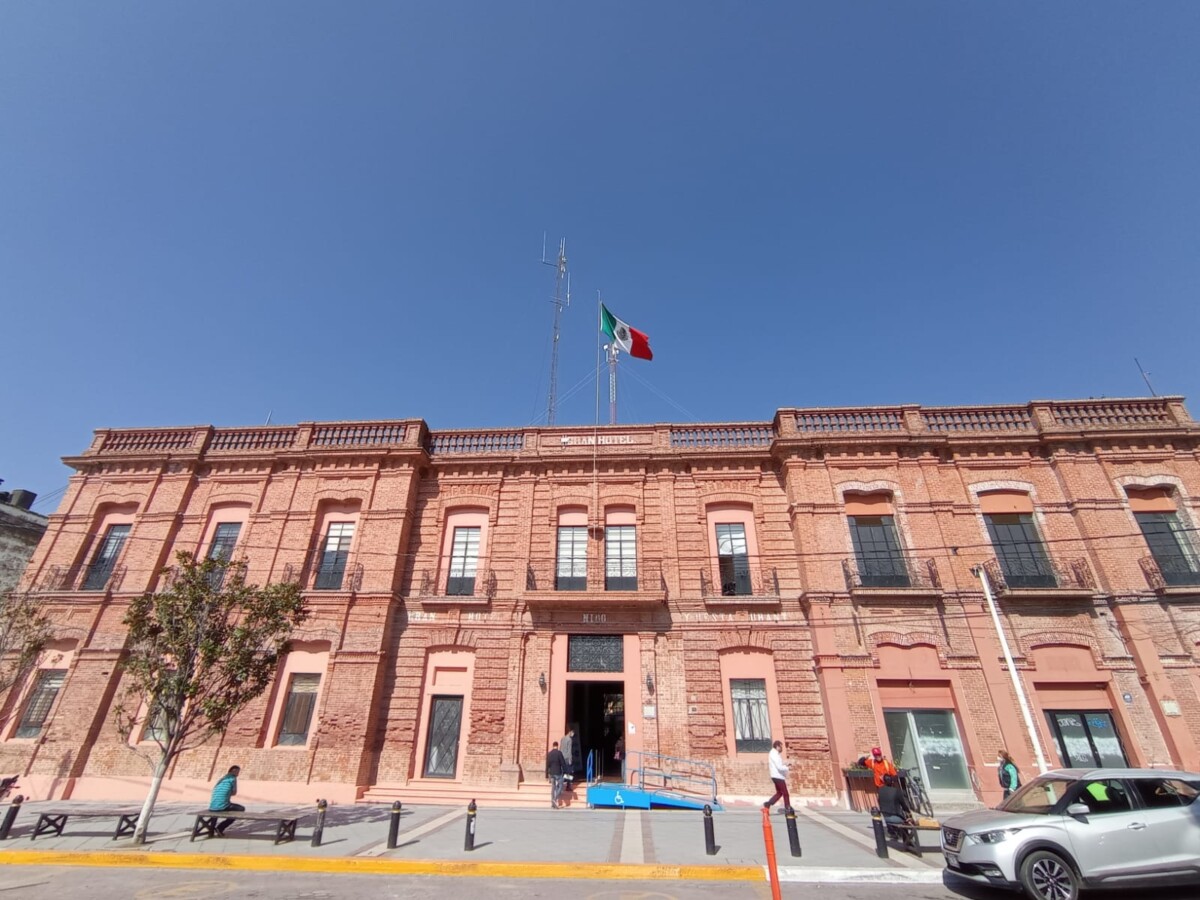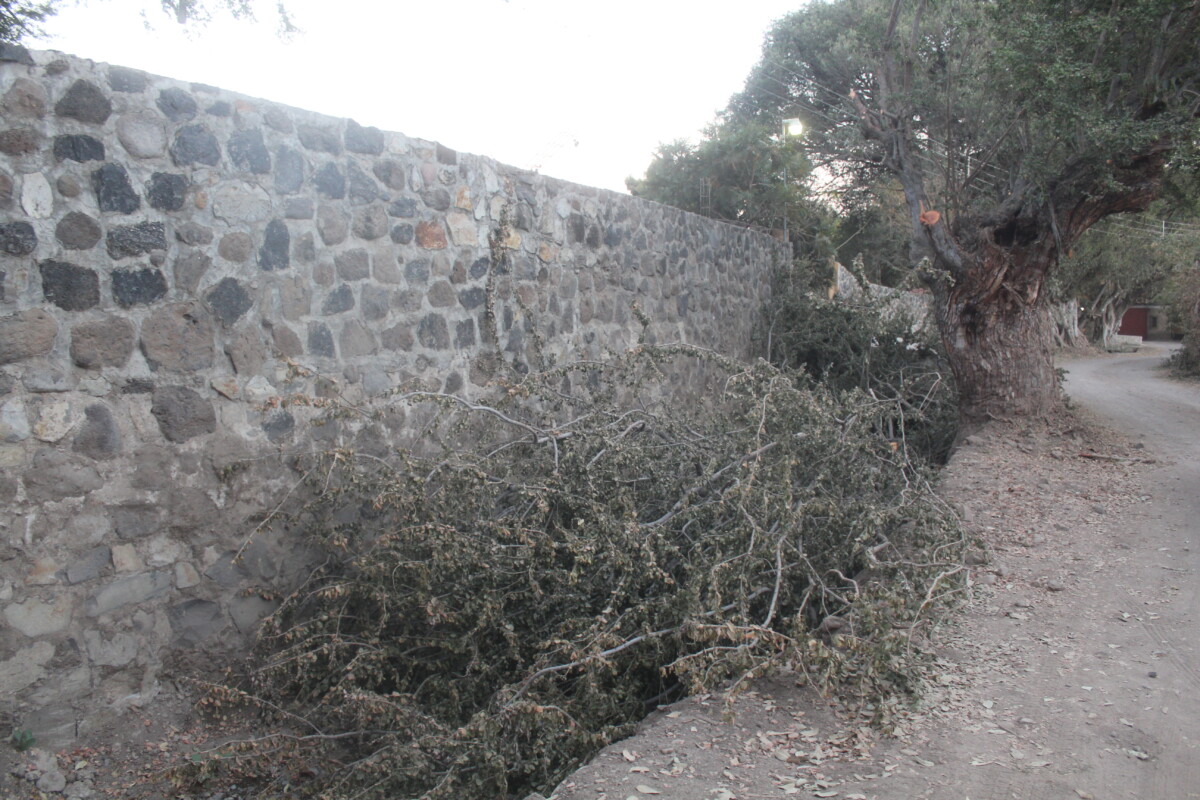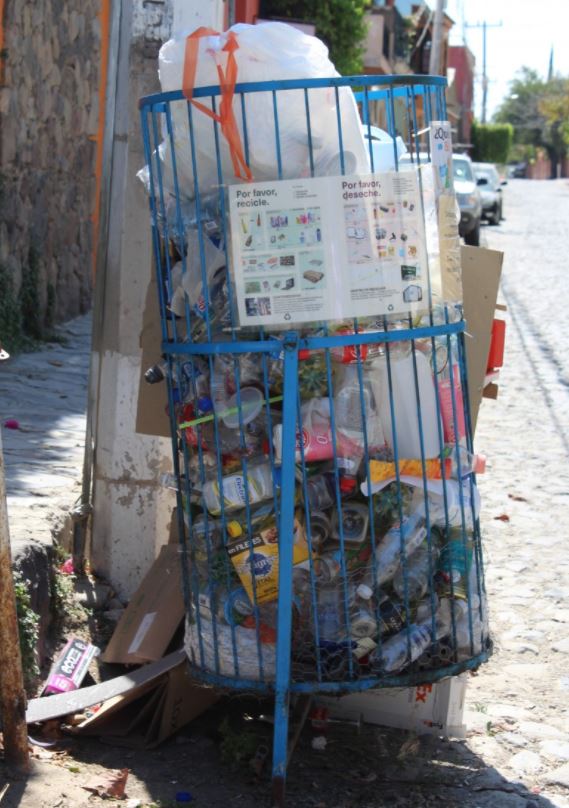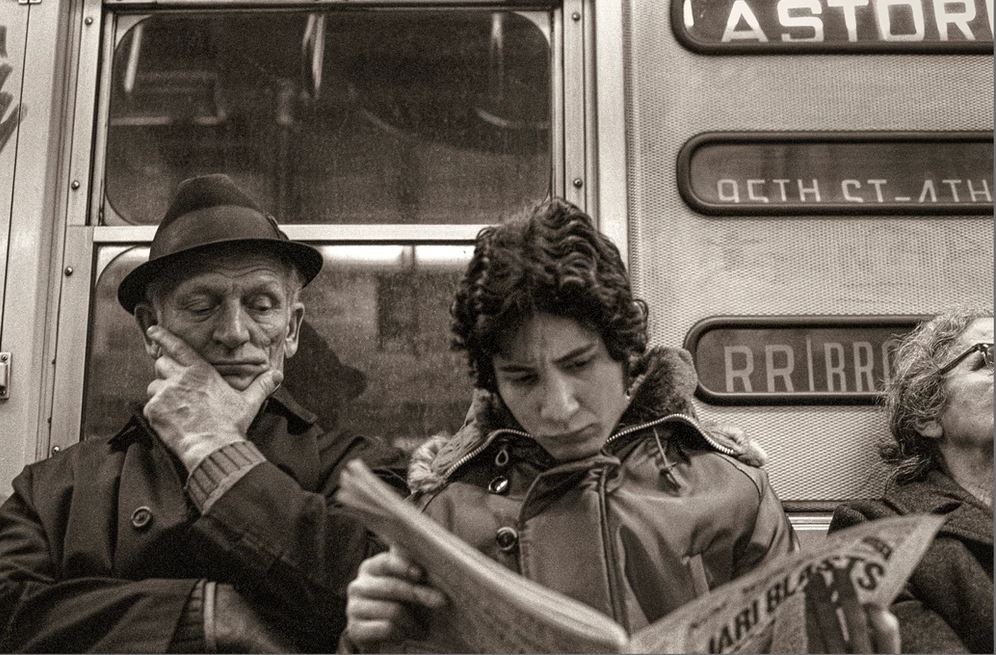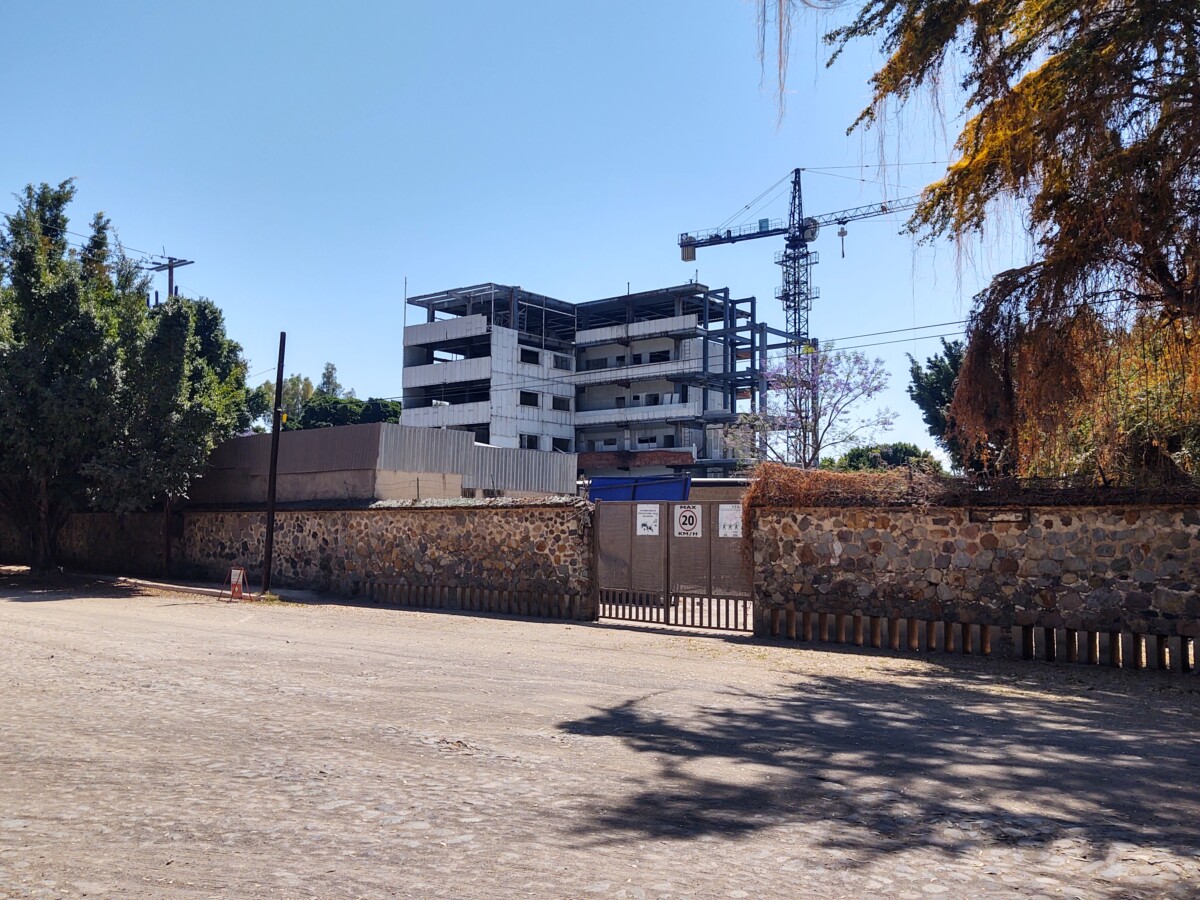Ajijic
Facilitan pago de predial en la Delegación de Ajijic
La Delegación de Ajijic funge como caja de cobro del predial para facilitar el proceso a adultos mayores. Foto: Sofía Medeles.
Sofía Medeles.- Con buena aceptación, se realizó la primera fecha de cobro del predial en Ajijic; el pasado 19 de febrero, más de 50 personas acudieron a pagar a la delegación.
Esta medida se implementó con la intención de facilitar el pago del impuesto a los residentes de la población, especialmente para los adultos mayores, explicó el encargado de despacho Maximiliano Macías Arceo.
“Algunos adultos mayores, se les dificulta ir a Chapala, tomar el camión, llegar a la fila, a veces no escuchan su número y se les pasa el turno. Con los cobros en la delegación, es más cómodo para ellos, y no se tardan mucho en el pago. Llegan, se les anota y los pasamos. No duran más de cinco minutos en el pago”.
Además, el funcionario informó que el primer sábado que se programó para los pagos, llegaron al menos 50 personas a realizar la contribución.
“Hubo mucho orden, y llegaron desde temprano, aunque el inicio se anunció a las 9:30 de la mañana, a las 9:00 ya había algo de personas. Estuvieron llegando muchas personas a lo largo del día”, agregó
Aunque los temas de convenios se manejan exclusivamente en la cabecera municipal de Chapala; pero, los descuentos para adultos mayores o viudos se respetan y se aplican también en la delegación.
Macías Arceo anunció que nuevamente se podrá realizar el pago de este impuesto el 26 de febrero, además de que se espera contar con dos fechas más en marzo.
Habitantes de Ajijic consultados por Semanario Laguna confirmaron que la medida ha sido favorable para las personas mayores, e incluso le simplifica el proceso a la población en general.
“De la forma en la que se organiza aquí es más rápido y fácil que en Chapala. Allá, suele tomar toda la mañana ir a hacer el pago, pero aquí, solo es organizarte el sábado, y acabar ese pendiente en menos de media hora. Ojalá se siga haciendo este año, y también los próximos”, comentó Blanca.
Las próximas fechas de cobro se anunciarán por medio de la página en Facebook “Delegación Ajijic 2021-2024”, y este sábado, el horario para realizar el pago del predial será de las 10:30 a las13:00 horas.
Lake Chapala down 36 centimeters
Mexico’s largest lake has lost 36 centimeters (about 14 inches) so far during the dry season. Photo: Archive.
So far in the dry season, Lake Chapala has lost 36 centimeters, and is down to 95.75 centimeters, 71 percent of its capacity, according to the National Water Commission (CONAGUA).
Parade attendees aggressively demanded the traditional ‘Toro de Once’
People protested in front of the Lienzo Charro (rodeo ring) de Ajijic, located on Revolución street, to demand its opening. Photo: Sofía Medeles.
Sofía Medeles (Ajijic).- People who attended the sayacas parade last Sunday, February 27 pounded on the gate, threw rocks and shouted , demanding to enter the Lienzo Charro (rodeo ring) de Ajijic, waiting for the «Toro de Once», a traditional charro rodeo that normally follows the parade.
Despite the fact that the Ajijic Charros Association had previously announced that this year the charreada would be canceled by agreement of the members of the association, the spectators followed the parade participants to the Lienzo Charro.
When their access was denied, a group of more than 100 people protested at the gates of the venue to demand to be let in, thinking that there was to be a private celebration. The president of the Charros Association, Ernesto Perez Reyes, who was present, confirmed the cancellation of the «Toro de Once,” for which he received verbal abuse and pressure from the crowd, who demanded access.
Perez Reyes clarified the reasons for not holding the tradition, as well as the reception, citing the restrictions imposed by the Covid-19 pandemic.
«The planning time was very short. The green light was only given a week and a half before, so there was no opportunity for planning the event. Another reason were the capacity restrictions, due to Covid, in venues where events are held, as in the case of the Lienzo.»
The representative of the charros explained that the permitted limit is 70 percent of the site’s capacity and, if the state restrictions are ignored, there could be consequences such as citations, fines, and even closures or limitations on future events.
Under this logic, because the «Toro de Once» is an event that packs the Lienzo Charro to overflowing, the association decided to omit the event entirely so as not to exclude anyone from the tradition.
«It is a measure that was taken due to the restrictions of the pandemic and the lack of time, but the charros hope that next year it will be better organized, with all the tradition that has led us to be a Pueblo Mágico. Also, on behalf of the Association, we thank the participants, those who understood the situation, and those who did not understand as well, for continuing to be part of the customs of Ajijic,» concluded Pérez Reyes.
Translated by Sandy Britton
Public works projects debt approved
Chapala City Hall building where on February 28th the councilmen approved the 7.9 million pesos debt.
Arturo Ortega (Chapala).- The Chapala City Council approved a debt of 7,912,060 pesos (about US$378,000) plus interest to fund public works in priority areas of the municipality, during the sixth ordinary council session held on February 28.
The debt, to be paid over a period of three years, will be contracted with the banking institution that submits the proposal with the lowest interest rate. This debt will finance public works specified in the catalog of actions established in the guidelines of the Contribution Fund for Social Infrastructure (FAIS) issued by the Welfare Secretariat.
Prior to the approval of the proposal, the Mayor of Chapala, Alejandro de Jesús Aguirre Curiel, explained that the resources will be invested in infrastructure projects including drainage, potable water, education and street rehabilitation works, which are considered a priority in Ajijic and Atotonilquillo.
Translated by MaryAnne Marble
Residents of La Cristina denounce neglect by authorities
After a pruning, CFE personnel left the branches in the creek of Las Garzas street in La Cristina Photo: Sofía Medeles
Sofía Medeles(Ajijic).– Residents of La Cristina, a neighborhood located to the west of Ajijic, denounced the lack of cleanup work after the mudslides of October 2021.
The complaints are mainly related to the silting of the creek on Las Garzas Street, in addition to the pruning work carried out 15 days ago by Federal Electricity Commission (CFE) personnel, which left the branches in the creek.
Other problems mentioned by affected residents were the spillage of sewage into the stream, and the encroachment on private property of debris from the landslide left by state cleanup crews after clearing.
«They have not cleaned the street well, nor the creek. With the sewage spill and the garbage dump left by the CFE workers, it is obvious that they do not pay attention to this side of town,» commented one of the inhabitants of La Cristina.
The person in charge of the office, Maximiliano Macias Arceo, acknowledged responsibility and said that they had been made aware of the problems from complaints that they have received.
«We are aware of the encroachment of debris on private property, as well as in the creek. In the next few days, we will carry out the necessary survey to file an official report so that crews and equipment will be sent to clean La Cristina, as well as the many streams that need to be cleared in the western zone of the township. We are going to work fast, to ensure that the creeks are cleared before the rainy season arrives to prevent further tragedy,» shared Macías Arceo.
Finally, regarding the sewage spill, Macías Arceo gave assurances that both he and the Department of Ecology are already attending to the problem. He also provided the telephone number that the public can use to report complaints of this type: 376-765-8025.
Translated by Rebecca Zittle
Ajijic recycling negotiations move ahead
Full cesto destined for the Ajijic Recycling Center.
Patrick O’Heffernan (Ajijic).– In a meeting between Esther Parada of the Ajijic Recycling Center and Chapala Council members and officials Thursday, March 3, the municipalidad agreed to reactivate the government committee needed to move head with the steps required for full operation of the recycling center.
The Center is currently operating at reduced capacity because its compactor – a machine needed to reduce the recycled materials for transportation to market – has not been installed and connected to electric power. The Recycling Committee will be able to address this and other needs of the Center when it is appointed.
“Yes, we want to see a strong recycling program in Ajijic,” Director of Ecology María Guadalupe Vázquez Solano told Laguna in an interview the day before the meeting, indicating that the next step was reconstituting the recycling committee.
This will be the third attempt to operate a robust recycling program in Ajijic; the last one was stymied by the previous administration. A current sticking point has been the ownership of the building, a former military training center, and the fact that it never received an address. Without an address CFE cannot set up an account to run electricity to the building to operate the Center’s compactor, bought 18 months ago with donated funds.
According to Recycling Center officials the compactor is critical for the transportation of plastics to market. Currently they are trucked to Guadalajara in small batches which is very expensive; a compactor would make transportation up to ten times more efficient, according to Recycling center leaders. Additionally they want to ensure that they have full ownership even after the compactor is installed as part of a new agreement to use the building.
Vázquez Solano told Laguna that the government is working on the problem of an address and the delay has simply been because of logistics – many steps needed. She also told Laguna that the government intends to provide the Recycling Center with an agreement that specifies that it owns the equipment, including the compactor, clearing the way for its installation.
The meeting included General Secretary Lilia Alvarado Macías, Councilman Jesús González Amezcua, Acting Ajijic Delegate Maximiliano Macías Arceo , Director of Tourism Paola de Watterlot , Ajijic Recycling Center Representative Esther Parada, and Ecology Director María Guadalupe Vázquez Solano.
In addition to the administration’s moving ahead with the Recycling Committee , Chapala President Aguirre reinforced his commitment to the Chapala environment at a meeting Thursday, March 3, with the Secretary of Environment and Territorial Development, Sergio Graf Montero to discuss an Organic waste separation project. Creation of an Integral System of Intermunicipal Waste Management (SIMARI), cooperation with CONAGUA and SEMADET to solve the problem of green algae in Lake Chapala, and setting up links to generate the breeding and growth of different types of fish in Lake Chapala.
World-traveled photographer opens show of vintage photos at Emma’s Deli
Stephen W. Heffernan. New York 8023 Subway, part of the show at Emma’s Deli.
Patrick O’Heffernan (Ajijic).-Ajijic resident Stephen W. Heffernan (no relation) opened a show of his Street Life in New York City in the 1970’s at Emma’s Deli, a series if fine black and white photographic prints showing not only the quirks and personalities of the streets of the US’s largest city, but the almost infinite greyscale graduations of his Ansel-Adams-influenced exposure, developing and printing process, now forgotten in the digital photo age.
Heffernan has traveled the world, especially Latin America and Cuba, taking photographs of street life in the style of the legendary Edward Weston. His photos have been displayed in galleries and museums, including the Fototeca de Cuba in Havana. His many series include street life and scenes from Europe, México, Namibia, Nicaaragua, South Africa , the USA, and Cuba.
“During the 1970’s I learned to make fine prints, guided by the classic books of Ansel Adams and delving into the history of photography,” says Heffernan, noting that “ Edward Weston was my first inspiration but, aesthetically my eye was drawn to the renowned European photojournalists and ‘street’ photographers. This show reflects that influence.”
The photographs displayed at Emma’s Deli have been curated from the earliest period of his 50-year career. The show will be up for three months Emma’s Deli is at Ramon Colon #5, Ajijic.
Agreement allows construction of a reduced La Floresta hotel to continue
Boutique hotel located next to Club Nautico, in La Floresta, east of the Ajijic delegation. Photo: Sofía Medeles.
Sofía Medeles (Ajijic).- Three of the seven floors built by developers of the boutique hotel under construction La Floresta will have to be removed, following an agreement between representatives of Club Náutico and members of the Fraccionamiento La Floresta.
The president of the Asociación de Colonos del Fraccionamiento La Floresta, Fernando Plata, said that after approximately seven years of conflict, the problem was finally resolved with an agreement unprecedented in conflicts of this type, given the legal framework in Mexico.
The developers must remove three floors of the seven that have already been built, and instead of constructing the three buildings originally approved – one for 8 stories – only one four story building with a Roof Garden can be constructed.
Plata explained that the court trials and the negotiations to reach an agreement with which both parties were satisfied took about seven years. He added that the approval and beginning of the project were irregular and were handled without informing the administration of the subdivision.
«Construction or modification projects in La Floresta first go through the colonos association to be approved or rejected, according to the regulations and norms of the area. This project never went through the office and we only found out about it after construction began,» said Fernando.
The neighbors were even more surprised when they learned of the magnitude of the project: three buildings of five stories each. They were also surprised at the time period the developer got the approvals; according to the representative’s calculations, it was between 2012 and 2014, and the work began in 2015, completely unknown to the neighbors.
«The subdivision (La Floresta) has been residential, low-density and single-family since it was created. Over time, some of the local names have changed, but the same character has been maintained. In addition to these characteristics, there is a maximum of two stories and a height limit that today is six meters and 30 centimeters. The Hotel Real de Chapala and the Club Nautico de Chapala, were originated with the subdivision, and adhered to the rules of this,» added Plata.
In 2016, with two lawsuits and a building that already had six floors built, the neighbors managed to get a judge to suspend the work. However, the Chapala administration of Javier Degollado González (2015-2018), did not comply with the order until at least a year and a half after it was issued. But a few days after the suspension, the permit was modified and a license for eight floors was authorized, ignoring the judges order.
The president of the colonos reported that it was not until 2021, at the end of the administration of Moises Alejandro Anaya Aguilar, that the municipal authorities intervened to bring both sides together to reach an agreement.
«With knowledge, common sense and understanding on both sides, the director of Urban Development, Gilberto Chairez, brought us together with the developers and we started working on the agreement. You have to understand that in this case, winning was not entirely winning,” said Fernando, “ if we won, the developers could sue the municipality for granting permits that could not be executed, and if they won, their hotel would be a target for further action because of the conditions under which the permits were granted,» he explained.
After approximately ten months of meetings, an agreement was signed before a notary, with the legal description of the land, the approved project was registered before the Public Registry of Property (RPP), a Federal Judge and the Magistrate of the Administrative Court were notified.
Every two months, they (Federal Judge and the Magistrate ) receive progress reports on the work at the colonos’ office.
«They have only removed the first of the seven floors, and have stopped on the other two, because they need to reinforce the structure before continuing to remove stories. They have complied and I am sure they will continue to comply,» said Platas.
Fernando commented that he feels satisfied with the work and the agreements reached after seven years of conflicts, and that neither he, nor the neighbors of La Floresta, are opposed to the developments, as long as they are coherent, have a balance, and also conserve the essence for which make the municipality of Chapala a popular tourist destination.
Translated by Patrick O’Heffernan
Tras acuerdos, continuarán construcción de edificio en el Fraccionamiento La Floresta
Hotel Boutique ubicado a un costado del Club Náutico, en la Floresta, al oriente de la delegación de Ajijic. Foto: Sofía Medeles.
Sofía Medeles.- Tres de los siete pisos construidos por desarrolladores del hotel boutique tendrán que ser removidos, tras un acuerdo entre representantes del Club Náutico y miembros del Fraccionamiento de La Floresta.
El presidente de la Asociación de Colonos del Fraccionamiento La Floresta, Fernando Plata, resumió que, tras un aproximado de siete años de conflicto, por fin se llegó a la resolución del problema con un acuerdo sin precedentes en conflictos de este tipo en el aspecto legal en el país.
Los desarrolladores deberán de retirar tres pisos de los siete que ya estaban construidos, y en lugar de construir tres edificios, del cual, el primero tenía ocho pisos aprobados, se autorizó a un solo edificio más ancho, de cuatro pisos y un Roof Garden.

Hotel boutique en el 2017. Foto: Archivo.
Plata explicó que, fueron alrededor de siete años los que llevan los juicios y la búsqueda del acuerdo con el que las dos partes quedaran conformes. Además, agregó que, desde la aprobación e inicio de los trabajos, fueron irregulares y se manejaron sin enterar a la administración del fraccionamiento.
“Los proyectos de construcción o modificación en La Floresta pasan primero por la asociación de colonos para aprobarse o descartarse, según los reglamentos y normas de la zona. Este proyecto nunca pasó por la oficina y nos enteramos de él, solo hasta que iniciaron con la construcción”, mencionó Fernando.
Fue mayor la sorpresa de los vecinos, al enterarse de la magnitud del proyecto: tres edificios de cinco pisos cada uno, y el tiempo que llevaba aprobado; según cálculos del representante, fue entre los años 2012 y 2014, y los trabajos iniciaron en el 2015.
“El fraccionamiento desde que fue creado ha sido habitacional, de densidad baja y unifamiliar. Con el paso del tiempo, las nomenclaturas han cambiado, pero se ha mantenido el mismo carácter. Además de estas características, está el máximo de dos pisos y una altura que hoy en día es de seis metros con 30 centímetros. El Hotel Real de Chapala y el Club Náutico de Chapala, nacieron con el fraccionamiento, y se apegaron a las normas de este”, añadió Plata.
En 2016, con dos juicios y un edificio que llevaba ya seis pisos construidos, lograron que un juez suspendiera la obra, no obstante, la administración de Chapala, encabezada por Javier Degollado González (2015-2018), no cumplió con la orden, hasta al menos un año y medio después de ser emitida, y pocos días después de la suspensión, se modificó y se autorizó una licencia para ocho pisos.
El presidente de los colonos informó que no fue hasta el 2021, a finales de la administración de Moisés Alejandro Anaya Aguilar, que las autoridades municipales intervinieron para apoyar a ambas partes del conflicto, reuniéndolos para llegar a un acuerdo.
“Con conocimiento, sentido común y comprendiendo las dos partes, el director de Desarrollo Urbano, Gilberto Chairez, nos reunió con los desarrolladores y empezamos a trabajar en el acuerdo. Hay que entender que en este caso, ganar no era del todo ganar. Si ganábamos nosotros, los desarrolladores podrían demandar al municipio por otorgar permisos que no se pudieran ejecutar, y si ganaban ellos, su hotel estaría señalado por las condiciones en las que se les dieron los permisos”, apuntó Fernando.
De esta manera, y tras aproximadamente diez meses de reuniones, se firmó un acuerdo ante un notario, con las delimitaciones del terreno; el proyecto aprobado se inscribió ante el Registro Público de la Propiedad (RPP), se le notificó a un Juez Federal y al Magistrado del Tribunal Administrativo. Cada dos meses, reciben en la oficina de colonos los informes de avances de la obra.
“Solo han retirado el primero de los siete pisos, y se han detenido en los otros dos, porque necesitan primero reforzar la estructura, antes de seguir quitando. Han cumplido y estoy seguro de que seguirán cumpliendo”, manifestó Platas.
Finalmente, Fernando comentó que se siente satisfecho por el trabajo y los acuerdos realizados tras siete años de conflictos, y que ni él, ni los vecinos de la Floresta, se oponen a los desarrollos, siempre y cuando sean coherentes, tengan un balance, y, además conserven la esencia por la que el municipio de Chapala es un lugar turístico.
Bike path outside Ajijic to be illuminated soon
Nighttime view on the bicycle path near Villa Nova driving west of Ajijic Photo: Sofía Medeles.
Sofia Medeles (Chapala).- Lighting will be completed along the bicycle path in Ajijic from Tempisque Street to Villa Nova, said Maximiliano Macias Arceo, who oversees the delegation office.
Last week, public lighting personnel from Chapala evaluated the lighting, wiring and material needs for lights to be installed along the bicycle path.
The Director of Social Communication, Elizabeth Oropeza Silva, added that the agency is already working on connecting the lights, and that the work will be completed this week. She stated that the lighting has been completed from Francisco I. Madero Avenue at its intersection with Hidalgo Avenue, in the municipal capital, to the Chapala-Jocotepec highway, at its intersection with Tempisque Street where the streetlights end.
There have been frequent daily complaints on social networks from citizens wondering why it has taken so long to connect the lights since the work appears finished.
Semanario Laguna made a tour of the area observing that it is quite dark. Cyclists who were passing through the area said they had very limited vision and felt they were at risk of being in an accident.
«From the three bridges it is already very dark and dangerous, because on this side people use the bike path as a sidewalk. They don’t see us, and we don’t see them. There have already been cases of bicycles colliding with pedestrians, but there hasn’t been a major accident. An accident could happen, because someone trying to dodge could get into the road and another accident could occur. Hopefully the authorities will act soon,» shared Andrés, a native of Ajijic, who frequently uses the bicycle path.
The Jalisco government has been in charge of the bicycle path construction that began in October 2019. The first stage of 8 kilometers from Chapala and to Ajijic was delivered in August 2020 with an investment of 58 million pesos.
Translated by Nita Rudy
© 2016. Todos los derechos reservados. Semanario de la Ribera de Chapala



